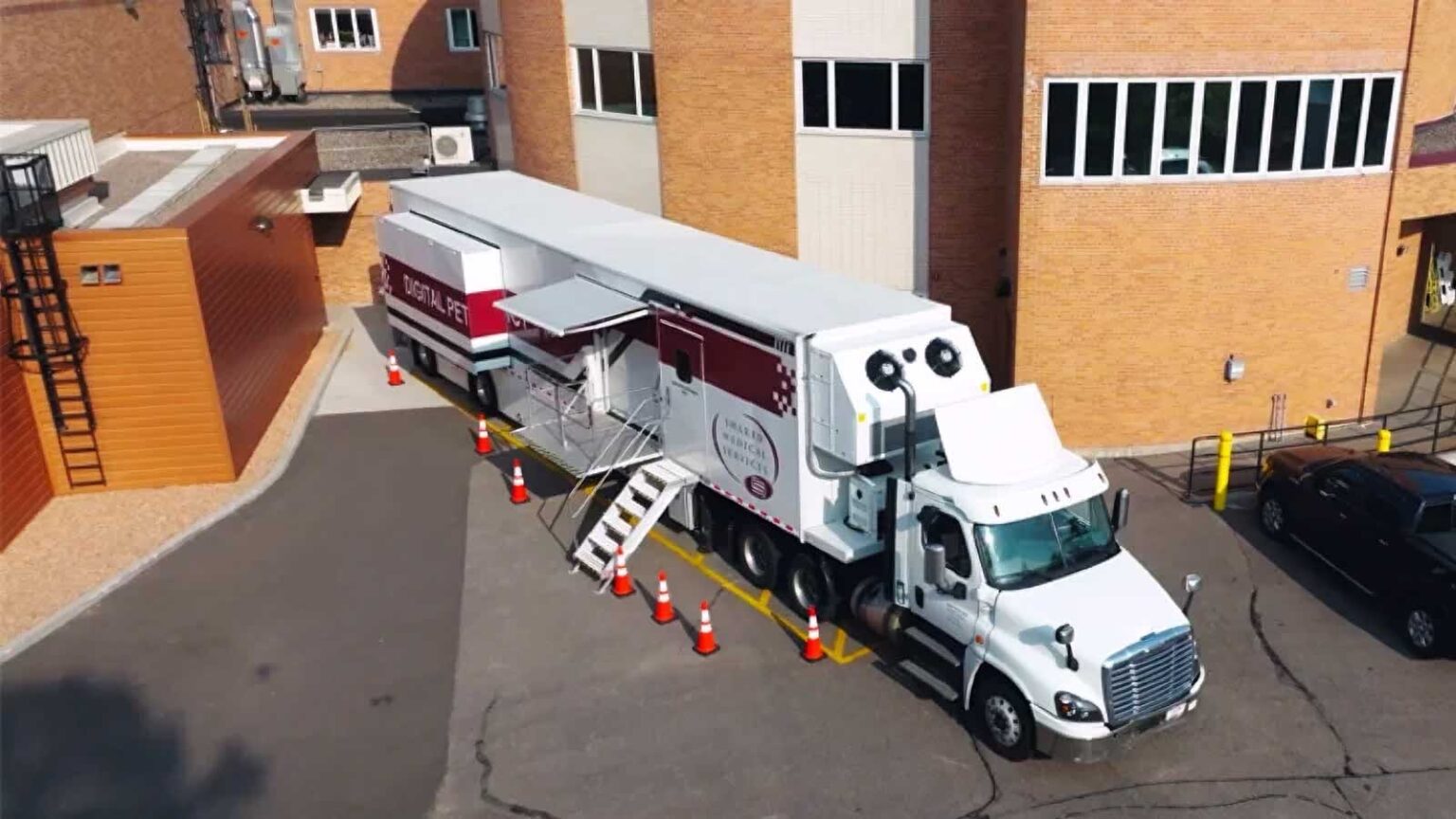PET/CT Scan
PET/CT Scans are performed in a special mobile facility that travels around Kansas on a specific schedule. Appointments are made through your care provider and generally are performed on Fridays. The mobile facility is operated by Shared Medical Services to bring advanced scanning technology to rural communities like ours.

PET stands for "positron emission tomography", and the test is often combined with a CT or "computed tomography” scan. Doctors use PET/CT scans to get a clear view of how the organs are working at the cellular level, which helps determine effective treatment options. PET/CT scans are commonly used to diagnose heart conditions, determine appropriate cancer treatment, and to diagnose Alzheimer’s disease and brain disorders. They also can provide data for medical research.
How the Test is Performed
A PET scan uses a small amount of a radioactive substance called a tracer to look for disease in the body. The tracer is given through a vein (IV). The needle is most often inserted on the inside of your elbow. The tracer travels through your blood and collects in organs and tissues. This helps the radiologist see certain areas more clearly.
You will need to wait as the tracer is absorbed by your body. This takes about 1 hour. Then, you will lie on a narrow table that slides into a large tunnel-shaped scanner. The PET detects signals from the tracer. A computer changes the signals into 3D pictures. The images are displayed on a monitor for your health care provider to read. You must lie still during the test. Too much movement can blur images and cause errors. How long the test takes depends on what part of the body is being scanned.
How to Prepare for the Test
You may be asked not to eat anything for 4 to 6 hours before the scan. You will be able to drink water but no other beverages including coffee. If you have diabetes, your provider will tell you not to take your diabetes medicine before the test. These medicines will interfere with the results.
Tell your provider if:
- You are afraid of close spaces (have claustrophobia). You may be given a medicine to help you feel sleepy and less anxious.
- You are pregnant or think you might be pregnant.
- You have any allergies to injected dye (contrast).
- You are taking any prescription or non-prescription medications. Sometimes, medicines may interfere with the test results.
Learn more about the mobile PET/CT facility
How the Test will Feel
You may feel a sharp sting when the needle with the tracer is placed into your vein. A PET/CT scan causes no pain. The table may be hard or cold, but you can request a blanket or pillow. An intercom in the room allows you to speak to someone at any time. There is no recovery time, unless you were given a medicine to relax.
Why the Test is Performed
- Assessing how far cancer has spread and determining the best treatment approach
- Checking how well cancer is responding to treatment or following up after treatment is completed
- Checking brain function
- Identifying the source of epilepsy in the brain
- Showing areas in which there is poor blood flow to the heart
- Determining if a mass in your lung is cancerous or harmless
Results
A normal result means there were no problems seen in the size, shape, or position of an organ. There are no areas in which the tracer has abnormally collected. Abnormal results depend on the part of the body being studied. Abnormal results may be due to cancer, infection, or problems with organ function.
Risks
The amount of radiation used in a PET/CT scan is about the same amount as used in most CT scans. These scans use short-lived tracers, so the radiation is gone from your body in about 2 to 10 hours. Having many x-rays, CT or PET scans over time may increase your risk for cancer. However, the risk from any one scan is small. You and your doctor should weigh this risk against the benefits of getting a correct diagnosis for a medical problem.
Tell your provider before having this test if you are pregnant or breastfeeding. Infants and babies developing in the womb are more sensitive to radiation because their organs are still growing.
Rarely, people may have an allergic reaction to the tracer material. Some people have pain, redness, or swelling at the injection site.
It is possible to have false results on a PET scan. Blood sugar or insulin levels may affect the test results in people with diabetes.
